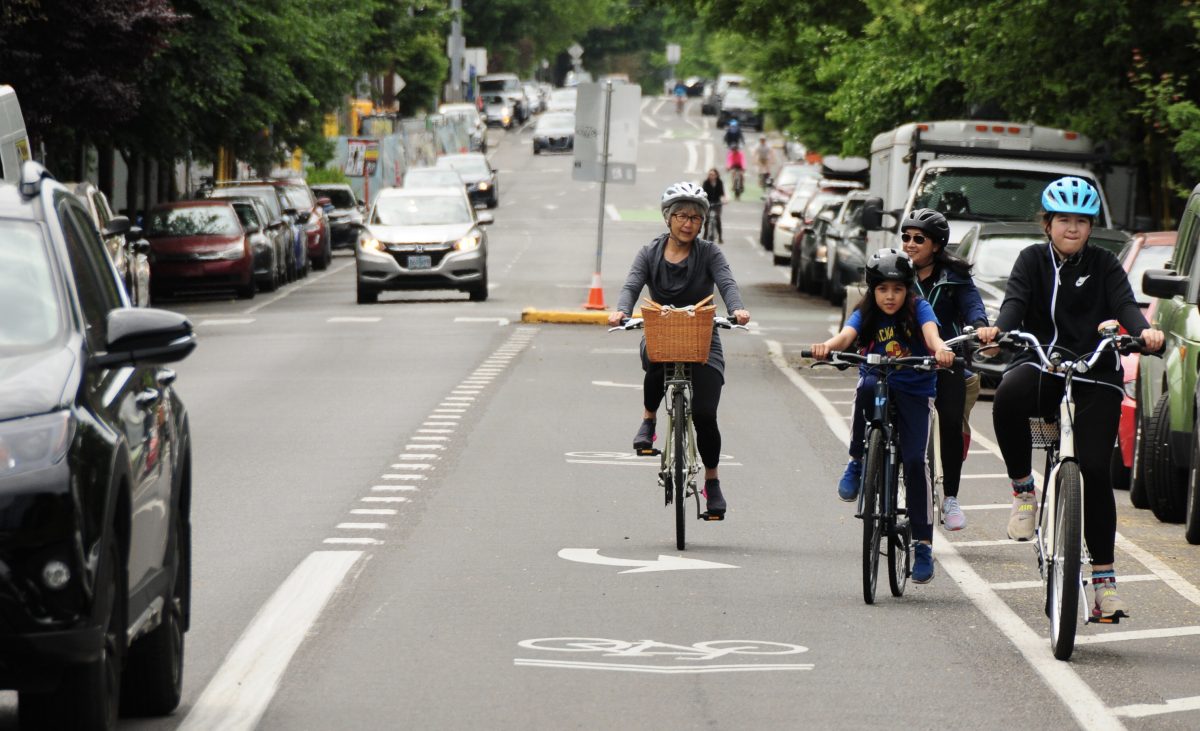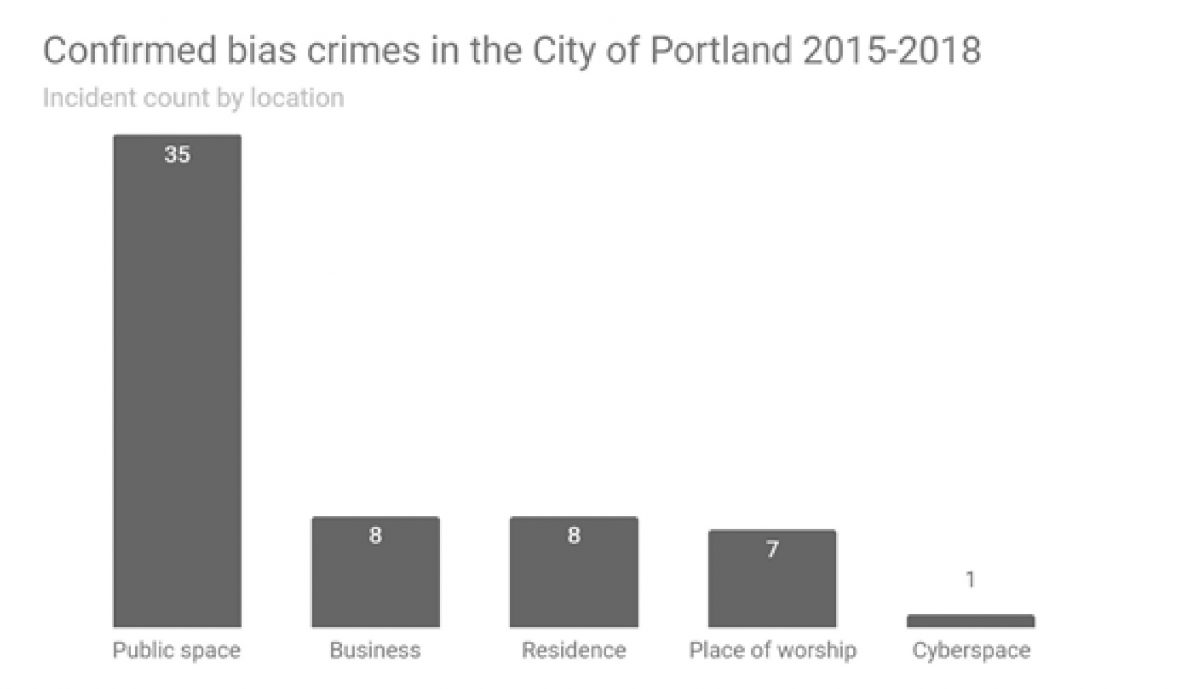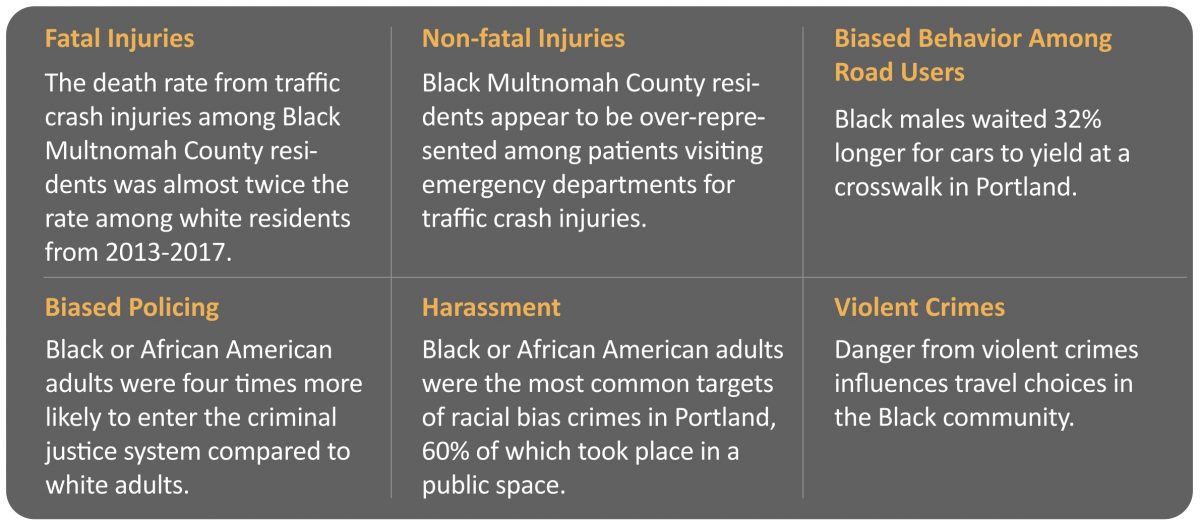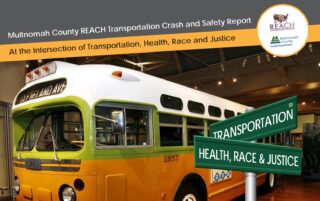
(Photo: Jonathan Maus/BikePortland)
Just weeks after Portland-based Asian Pacific American Network of Oregon released a statement condemning a spate of racism-fueled, anti-Asian and anti-Muslim violence in the Portland area, a new report from the Multnomah County Health Department begins an important new chapter in Portland’s fight for safe streets for all.
For years, transportation professionals have known racial equity is a vital part of their work. But what do terms like “applying an equity lens” actually mean? How does an organization put that concept into practice?
The Multnomah County Health Department’s Racial and Ethnic Approaches to Community Health (REACH) has provided some answers. Their new report, Transportation Crash and Safety Report – At the Intersection of Transportation, Health, Race and Justice provides crucial data and guidance to take racial equity from concept to implementation.
Advertisement




The report not only raises awareness about how racism intersects with transportation planning and policy work, it establishes baseline data on transportation safety for the Black/African American and African Immigrant/Refugee populations.
“Our findings reinforce the need for ongoing attention to the injustices experienced in our transportation system and the positive impacts that can come when policy, system, and environmental changes are made using an equity lens,” reads a summary from the report.
This report goes beyond traditional traffic safety metrics. In addition to fatalities and injuries, REACH’s “Six Dimensions Of Transportation Safety” include: Biased behavior among road users, biased policing, harassment, and violent crimes.
Here are the key findings:
● Racism and racist systems related to housing, transportation, law enforcement, and healthcare have produced avoidable and unacceptable inequities in transportation safety outcomes for the Black population in Multnomah County.
● The death rate from traffic crashes among Black residents in Multnomah County was nearly twice the rate among white residents during the period 2013-2017.
● Data suggest a disproportionate representation of Black patients among people seeking treatment for traffic crash injuries in emergency rooms and urgent care clinics.
● Road users exhibit biased behavior, such as failing to yield to Black pedestrians in a crosswalk. Black males waited 32 percent longer for cars to yield at a crosswalk in Portland.
● Black or African American people were the most common targets of racial bias crimes in Portland from 2015 through 2018. The impact of white supremacist attacks in the right of way causes people to choose travel routes and modes that maximize personal safety despite higher costs.
● Black or African American adults were four times as likely to enter the criminal justice system compared to white adults, and once within it, continued to experience disparate outcomes. A greater likelihood of being stopped by law enforcement in public spaces and in traffic contributes to higher levels of interaction with the criminal justice system.
To combat these conditions, REACH breaks down their recommendations into three strategies: policy, systems, and environmental.
Policy strategies include quality engagement with communities of color, measurable equity goals and routine evaluation. Systems strategies include more collaboration with public health partners and more accessible planning and engagement activities. Environmental strategies call for a more investment in infrastructure that calms traffic and separates modes, more investment in neighborhoods with a high proportion of Black residents, and more focus on creating right-of-way that feels safe and welcoming through artwork, street name changes, and cultural events.
Two Multnomah County staff who were on the project team — Brendon Haggerty and Charlene McGee — will join Multnomah County REACH Program Principal Investigator Tameka Brazile to present the report at a seminar hosted by the Transportation Research and Education Center at Portland State University today (Friday, 2/26) at 11:30 am (it will be recorded for viewing at any time.)
You can download the full report here or the executive summary here.
— Jonathan Maus: (503) 706-8804, @jonathan_maus on Twitter and jonathan@bikeportland.org
— Get our headlines delivered to your inbox.
— Support this independent community media outlet with a one-time contribution or monthly subscription.


